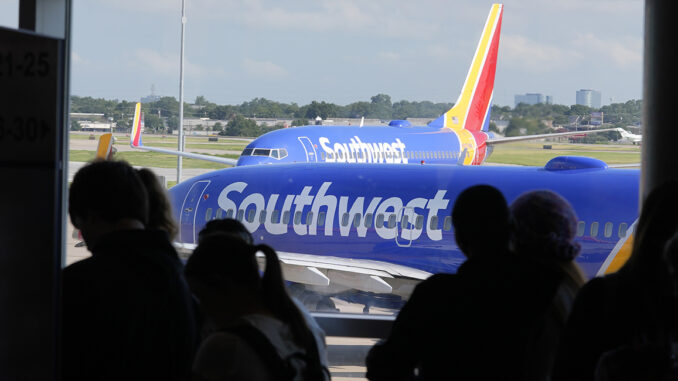
DALLAS —Southwest Airlines announced last Thursday that it plans to discontinue its more than 50-year-old open-boarding system and start assigning passengers seats like all the other big airlines.
The airline has been studying seating options, running tests and surveying customers. Southwest discovered that preferences have changed over the years, and most travelers now want to know where they are sitting before they get to the airport.
Southwest’s unusual boarding process started as a fast way to load passengers and limit the time that planes and crews spend sitting idly on the ground not making money. It helped the airline operate more efficiently and squeeze more flights into the daily schedule.
It was one reason Southwest, alone among U.S. airlines, remained profitable every year until the coronavirus pandemic.
Here’s how it works: Instead of being assigned a seat when they buy a ticket, Southwest customers check in exactly 24 hours before departure to secure their spots in boarding lines. Initially, the first 30 to check in were put in the coveted “A” boarding group, guaranteeing them a window or aisle seat. Dawdlers landed in “B,” still OK, or “C,” which would often result in a middle seat.
The system became less democratic over time as Southwest let people pay extra to guarantee a spot near the front of the line. Despite that, many Southwest loyalists still love open seating. The airline thinks it will adapt.
“I know customers will say, ‘I want to stay with open seating.’ It’s a minority,” Southwest CEO Robert Jordan told CNBC, “but we had the same thing when we switched from plastic boarding passes. We had the same thing when we took peanuts out of the cabin. I’m convinced we can win them over.”
The airline said surveys showed that 80% of its customers — and 86% of “potential” customers — want an assigned seat. Jordan said open seating was the top reason travelers cited for choosing another airline over Southwest.
In addition to the seating switch, Southwest plans to sell premium seating with more legroom – matching a standard practice among other large U.S. carriers — and offer red-eye flights for the first time.
Southwest said red-eyes will start flying nonstop routes in mid-February, including Las Vegas to Baltimore and Orlando, Los Angeles to Baltimore and Nashville, and Phoenix to Baltimore. More routes will be added over time.
The changes come as Southwest is under pressure from Elliott Investment Management. The hedge fund argues that the airline lags behind rivals in financial performance and has yet to change with the times. It wants to replace Jordan and Chairman Gary Kelly.
Southwest also faces increased scrutiny from the Federal Aviation Administration after a series of worrisome flights, including one that dove within 400 feet of the ocean off Hawaii and two that flew at extremely low altitudes while still miles from landing at airports in Oklahoma and Florida, and another that was discovered to have rudder-area damage after an unusual “Dutch roll” wiggle during a flight.
Southwest announced the seating move and other changes on the same day that American Airlines reported a steep drop in second-quarter profit despite higher revenue.
Airlines are struggling with higher costs and reduced pricing power, especially on flights within the United States, as the industry adds flights faster than the growth in travel demand.
Southwest, based in Dallas, said its second-quarter profit fell 46% from a year earlier to $367 million, as higher costs for labor, fuel and other expenses outstripped an increase in revenue.
The results met Wall Street expectations.
American Airlines also reported a 46% drop in profit to $717 million. They said it would break even in the third quarter — well below Wall Street expectations of 48 cents per share profit in the July-through-September period.
CEO Robert Isom said American “did not perform to our initial expectations” because of a since-abandoned sales strategy and an oversupply of domestic flights. He said the airline was responding with a strategy that boosts profits and “makes it easy for customers to do business with American.”
American cut its full-year earnings forecast to between 70 cents and $1.30 per share, down from a previous prediction of $2.25 to $3.25 per share.
